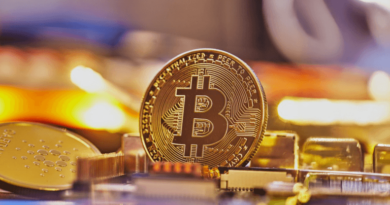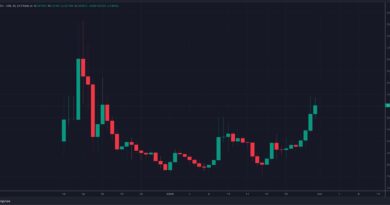First Mover: What’s Next for Bitcoin as Wall Street Gets Vaccine Booster

Bitcoin was higher for a second day, staying in a range between roughly $15,200 and $15,600, as news of progress in developing a coronavirus vaccine appeared to touch off a rally in U.S. stocks.
With the outcome of last week’s U.S. presidential election now mostly settled, crypto analysts turned to other market factors, such as whether investors and bitcoin miners might take advantage of the recent price increase to pocket gains.
“The week ahead is not as easy to call,” Matt Blom, head of sales and trading at the cryptocurrency-focused financial firm Diginex, wrote in a note to clients. “The initial thoughts lead me to believe we will consolidate, with support levels being tested throughout the early part of the week. Profit taking could feature.”
In traditional markets, reports of vaccine success vaccine pushed up U.S. stock futures. Gold changed hands at $1,915 an ounce, down 1.9% for the biggest drop in a month.
Market Moves
The U.S. election is over. Whew.
What remains is that the coronavirus pandemic is far from over, nations are saddled with debt, foregone revenue is driving up corporate bankruptcies and some 10 million fewer Americans are employed than at the start of the year. A divided U.S. Congress at a time when President Donald Trump is still challenging the outcome of the elections could stall passage of a new fiscal stimulus bill — anywhere from $750 billion to $1.5 trillion. Federal Reserve Chair Jerome Powell said last week that such a package is still badly needed to help the economy heal.
With those downers as the backdrop, CoinDesk’s Omkar Godbole has dug into the important question of whether the introduction of a digital dollar might spur higher inflation that’s been largely absent even after the Fed pumped expanded its balance sheet this year from $4 trillion to more than $7 trillion.
It’s an academic question of sorts; the Fed is conducting research on a digital dollar but doesn’t appear in any rush to launch one.
But Cleveland Federal Reserve President Loretta Mester earlier this year suggested that a digital dollar might represent a way for the U.S. central bank to distribute aid directly to Americans – rather than having to wait for Congress to authorize more fiscal stimulus or relying on banks and Wall Street to pass along any monetary stimulus to households and small businesses.
Jeff Gundlach, chief executive of the $141 billion bond fund DoubleLine Capital, noted recently in a report that central bank digital currencies could “possess the necessary plumbing to directly deliver a digital currency to individuals’ bank accounts, ready to be spend via debit cards.”
“Such a mechanism could open veritable floodgates of liquidity into the consumer economy and accelerate the rate of inflation,” Gundlach wrote.
That could have implications for bitcoin, seen by a growing number of investors as a hedge against inflation, as well as for digital-asset markets overall, where privately issued dollar-linked “stablecoins” are already circulating widely.
President-Elect Joe Biden’s stance toward the cryptocurrency is largely a blank slate, as reported by CoinDesk’s Nikhilesh De, so it’s unknown whether any of his appointees might push for a digital dollar.
With such deep troubles still facing the economy and the traditional financial system, it’s hard to rule anything out.
Bitcoin Watch
Bitcoin’s on-chain activity suggests miner confidence in the ongoing price rally.
On Sunday, nearly 1,129 BTC were moved from miner wallets to cryptocurrency exchanges. That’s the biggest single-day outflow since December 2019, according to data source Glassnode. Further, miners have run down inventory by 2,647 BTC over the past seven days by selling more than they mined, according to data source ByteTree.
Miners typically sell more when they feel the market has the strength to absorb their extra supply. Conversely, they tend to hoard when the market looks weak. They have to be cautious as mining profitability is positively correlated to price, and their actions often make or break price trends.
“Miner outflows show it’s a great market to sell into,” Charlie Morris, chief investment officer at ByteTree Asset Management, told CoinDesk over WhatsApp.
The market depth suggests that the recent price run looks set to continue. The bullish case looks stronger considering the past week’s strong close above the June 2019 high of $13,880. With the breakout, the cryptocurrency has toppled the final technical barrier on the road to a potential new all-time high.
However, bigger gains may be seen following a bout of consolidation or re-test of the former hurdle-turned-support of $13,880, as the daily and weekly chart indicators are signaling overbought conditions.
Token Watch
Bitcoin (BTC): Investing legend Bill Miller, whose stock picks beat the Standard & Poor’s 500 for 15 years, tells CNBC that every major investment bank will eventually own bitcoin or something like it.
XRP from Ripple (XRP): Payments-focused blockchain firm behind XRP token sets up regional base in Dubai while mulling exodus from U.S. due to unfavorable regulatory regime.
Litecoin (LTC): Also-ran cryptocurrency gets included in Venezuelan government’s new crypto exchange, alongside bitcoin, dash (DASH) and the government-sponsored petro (PTR).
Bitcoin Cash (BCH): Kraken crypto exchange says it will only support upcoming hard-fork Bitcoin Cash ABC “if the hash power on the ABC network is at least 10% of the hash power on the Bitcoin Cash Node network.”
Grin (GRIN): Privacy coin, once dubbed “bitcoin 2.0,” gets hit with 51% attack.
What’s Hot
President-Elect Biden’s policy positions on cryptocurrencies, blockchain looks like mostly blank slate (CoinDesk)
Margin calls appear subdued in latest bitcoin rally as spot markets take back limelight from derivatives exchanges (CoinDesk)
JPMorgan says family wealth-management offices may now see bitcoin as alternative to gold (CoinDesk)
Hive Blockchain, bitcoin mining firm, brings 1.2K MicroBT WhatsMiner M30S computers online, nearly doubling hash power (CoinDesk)
Crypto lender Cred files for bankruptcy, citing “irregularities” in the handling of corporate funds (CoinDesk)
Analogs
The latest on the economy and traditional finance
Departing from historical trend, gold and stocks are increasingly trading in tandem (WSJ)
Turkish lira surges 4% against U.S. dollar as Erdogan dismisses central-bank governor, raising expectations that replacement will raise interest rates to combat inflation (WSJ)
Assured by public guarantees, Japanese banks ramp up support for ailing small businesses at record pace, featuring no-interest loans (WSJ)
Report that U.S. President-Elect Biden might ease work-visa rules drives up stocks in India (Reuters)



